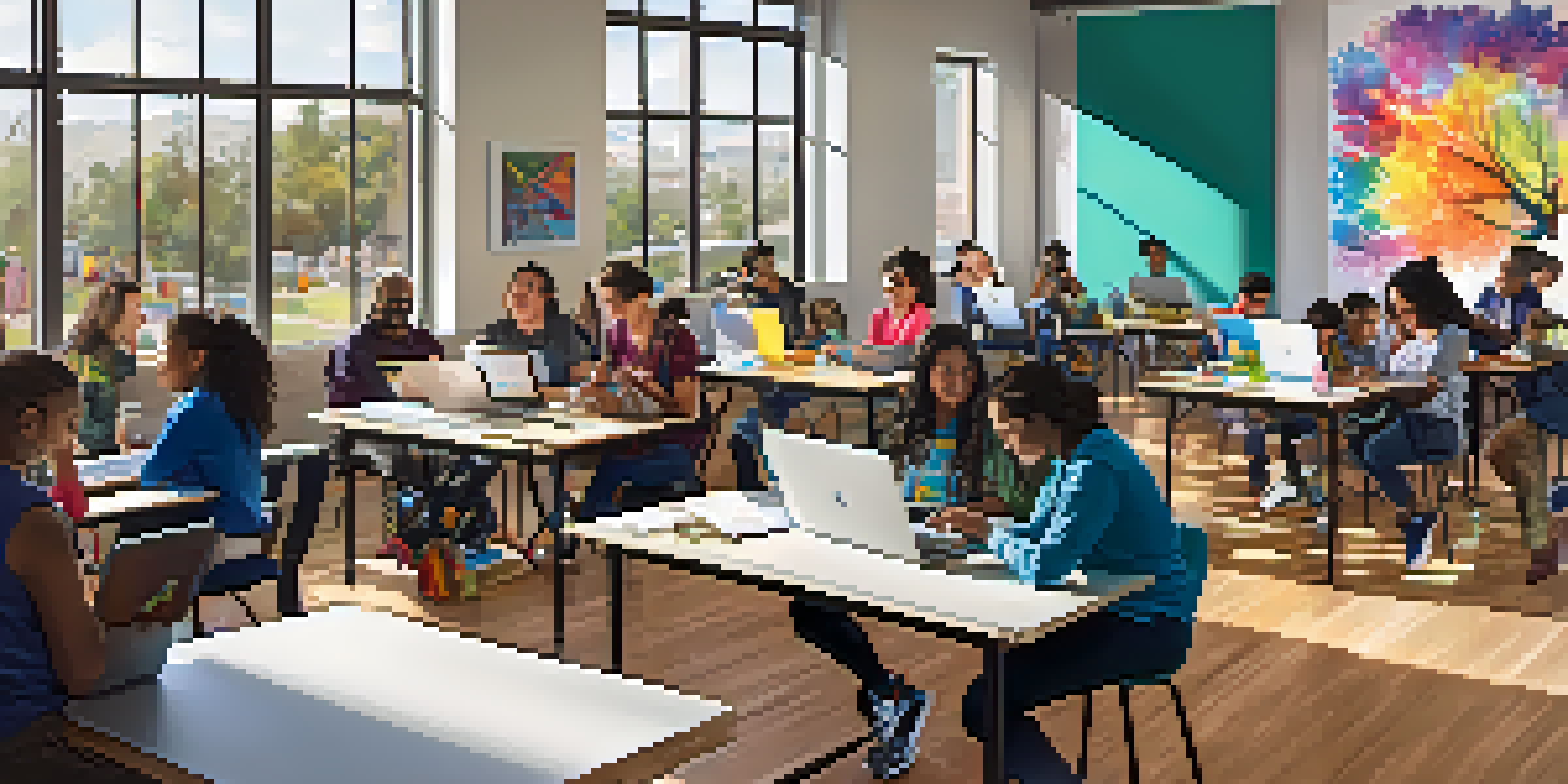Efforts to Bridge the Digital Divide in San Jose

Understanding the Digital Divide in San Jose
The digital divide refers to the gap between those who have easy access to the internet and technology and those who do not. In San Jose, a city known for its tech innovation, this divide is particularly striking. Many residents, especially in low-income neighborhoods, struggle to connect with essential online resources, which can hinder their education and employment opportunities.
Access to technology is a basic human right. We must ensure that every individual, regardless of their background, has the tools they need to succeed in the digital age.
This disparity has real consequences; for instance, students without reliable internet access may fall behind in their studies. Additionally, adults seeking jobs often find it challenging to apply online or enhance their skills through digital courses. Understanding this issue is the first step toward addressing it effectively.
Local leaders and community organizations recognize that bridging this divide is crucial for fostering an inclusive society. By highlighting the importance of access to technology, they aim to rally support and resources from various stakeholders.
Community Initiatives Targeting Digital Access
Numerous community organizations in San Jose are stepping up to tackle the digital divide head-on. For example, groups like Tech Exchange provide refurbished laptops to families in need, ensuring they have the tools to succeed. These initiatives not only supply hardware but also offer training sessions to help users feel confident in navigating the digital world.

Moreover, local libraries have expanded their services by providing free Wi-Fi access and computer classes. These resources empower community members, allowing them to learn essential skills and stay connected. Such efforts are vital in ensuring that everyone can benefit from the digital age.
Digital Divide Affects Education
Many residents in San Jose, particularly in low-income neighborhoods, struggle with internet access, hindering their educational and job opportunities.
By fostering a sense of community and collaboration, these initiatives are creating a more equitable technological landscape. They demonstrate that when people come together, significant change can happen.
Role of Local Government in Bridging the Divide
The local government plays a pivotal role in addressing the digital divide. San Jose has implemented various policies aimed at improving internet access, such as prioritizing broadband expansion in underserved areas. This commitment is crucial for ensuring that all residents can access high-speed internet, which has become a necessity in today’s world.
The greatest danger in times of turbulence is not the turbulence; it is to act with yesterday's logic.
Additionally, the city collaborates with tech companies to create initiatives that promote digital equity. These partnerships often lead to innovative solutions, such as providing free or low-cost internet options for low-income households. This coordinated effort is a strong step toward closing the gap.
Through these initiatives, the government not only addresses immediate needs but also lays the groundwork for long-term solutions. By investing in infrastructure and community programs, they are fostering an environment where everyone can thrive.
Educational Programs Enhancing Digital Literacy
Education is a crucial element in bridging the digital divide, and various programs are emerging in San Jose to enhance digital literacy. Organizations like the San Jose Public Library offer workshops and resources to help residents develop essential tech skills. From basic computer training to advanced coding classes, these programs cater to all skill levels.
Moreover, local schools are increasingly integrating technology into their curricula. This approach not only prepares students for a digital future but also encourages parents to become more involved in their children's learning. When families engage with technology together, they foster a supportive environment for growth.
Community Efforts Enhance Access
Local organizations and libraries are providing essential technology and training to empower residents and bridge the digital divide.
By equipping individuals with necessary skills, these educational initiatives empower them to take full advantage of digital resources. Ultimately, this creates a more informed and capable community.
Private Sector Contributions to Digital Equity
The private sector has an essential role in bridging the digital divide, and many tech companies in Silicon Valley are stepping up. For instance, organizations like Google and Cisco have launched initiatives aimed at increasing internet access and digital literacy in underserved communities. Their resources and expertise can significantly impact local efforts.
In addition to providing funding, these companies often collaborate with nonprofits to create tailored programs that meet the specific needs of residents. This partnership approach ensures that resources are directed where they will make the most difference. It also fosters a sense of corporate responsibility among tech giants.
By working together, the private sector and community organizations can create sustainable solutions that extend beyond mere access to technology. They can build a foundation for ongoing support and development.
Challenges in Bridging the Digital Divide
Despite the numerous efforts to bridge the digital divide in San Jose, challenges remain. One significant hurdle is the ongoing issue of funding; many initiatives rely on grants and donations, which can be unpredictable. This uncertainty can hinder the long-term sustainability of programs aimed at improving digital access.
Furthermore, a lack of awareness about available resources can prevent residents from seeking help. Many individuals may not realize that free internet access or tech training is within reach. Raising awareness through community outreach and marketing is crucial to ensuring that these programs reach those who need them most.
Government and Tech Collaboration
The San Jose government is partnering with tech companies to expand internet access and promote digital equity for underserved communities.
Lastly, the rapid pace of technological change can create a gap in skills, as new tools and platforms emerge. Continuous training and support are essential to keep community members engaged and informed.
Future Outlook for Digital Access in San Jose
Looking ahead, the future of digital access in San Jose appears promising but requires sustained effort. As awareness of the digital divide grows, more community members and organizations are likely to join the conversation. This collective action can lead to innovative solutions that address the unique needs of the city.
Additionally, advancements in technology, such as 5G networks, may provide new opportunities for expanding access. By leveraging these innovations, San Jose can continue to improve its digital landscape. However, it is important that these advancements are made available equitably.

Ultimately, the goal is to create a community where all residents can thrive in a digital world. With continued collaboration and commitment, bridging the digital divide in San Jose is not just a possibility; it is an achievable reality.